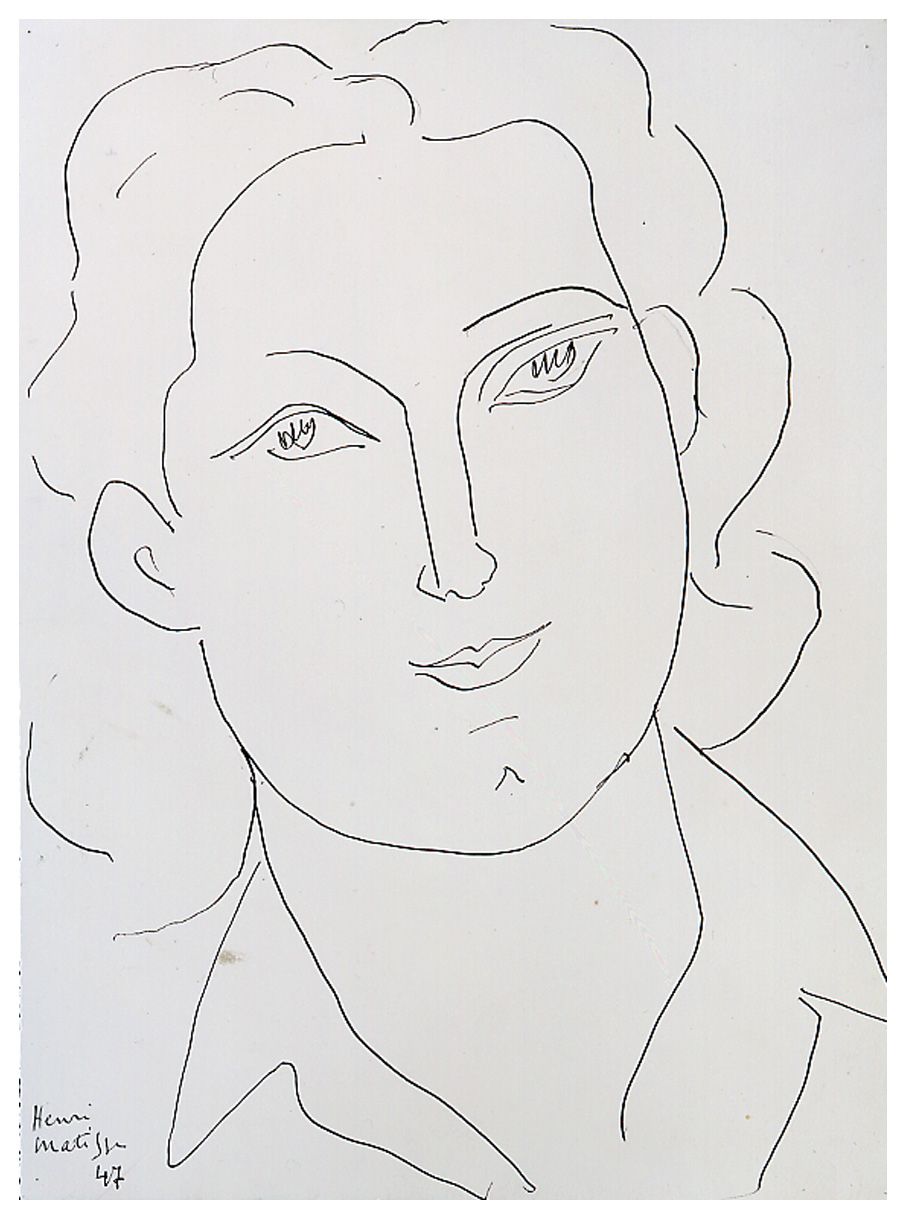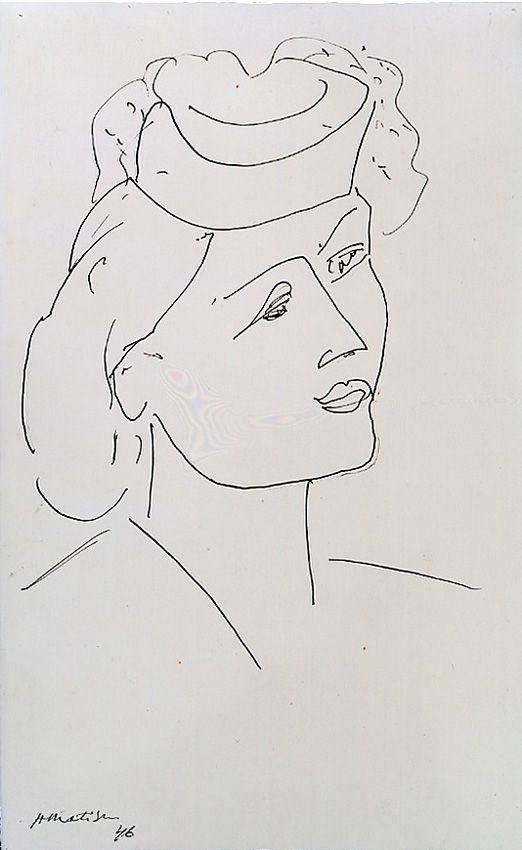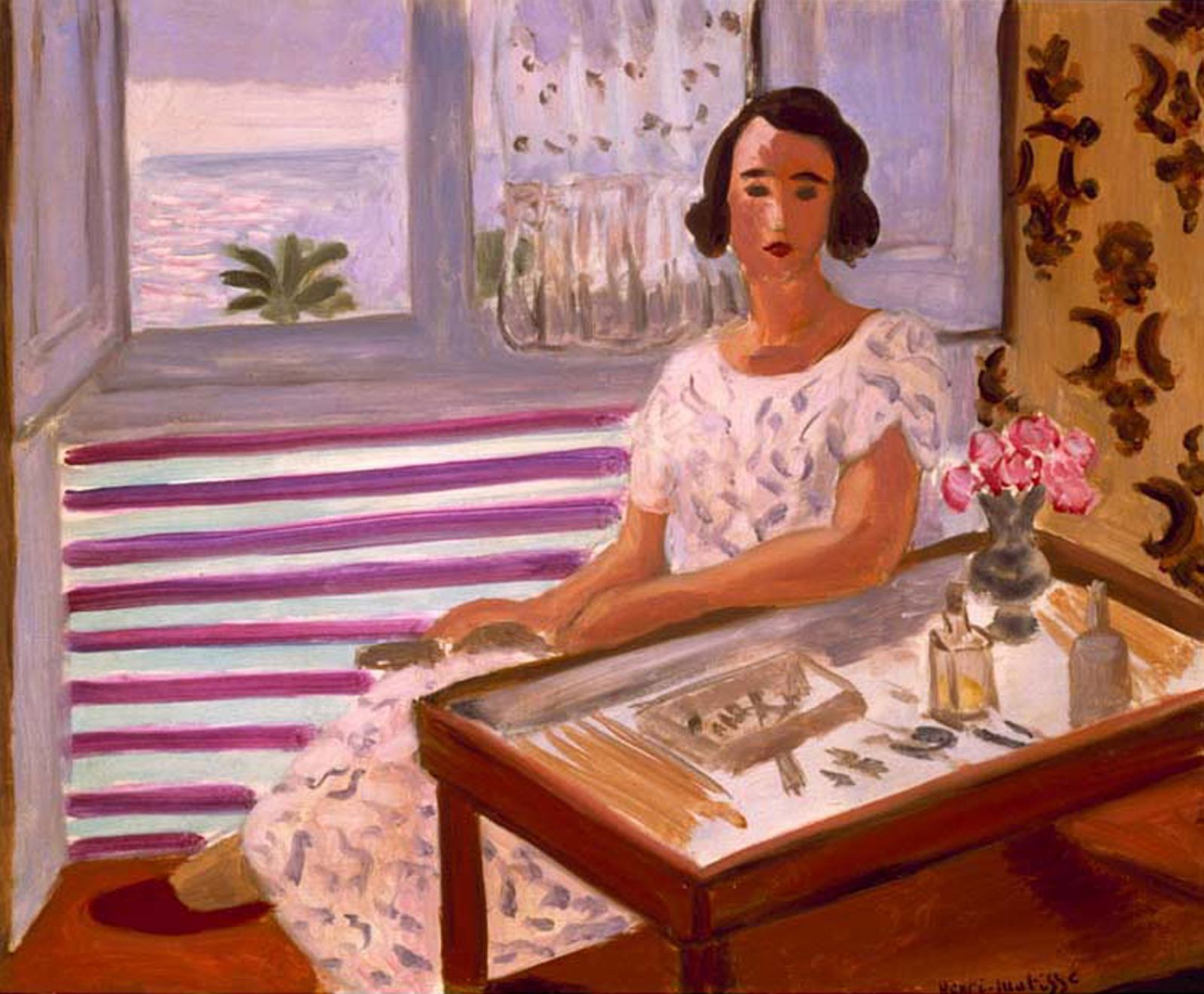Henri Matisse
Selected Works

Henri Matisse
Visage de femme, 1947
Dessin à la plume
36 x 28 cm
Signé et daté en bas à gauche

Henri Matisse
Femme au chapeau (Portrait d'Elsa Triolet), 1946
Dessin à la plume
46 x 28,5 cm
Signé et daté en bas à gauche

Henri Matisse
Femme assise à sa coiffeuse, vers 1923
Huile sur toile
37,5 x 45 cm
Signé en bas à droite
Some of the works depicted are no longer available.
Biography
Henri Matisse had a major influence on his contemporaries, both figurative and abstract. As a leader of Fauvism, he emphasized the simplification of forms, stylization, synthesis, and the use of color as a central element of painting.
In 1904, he organized his first solo exhibition, and the same year, he took a studio on rue de Sèvres. From 1905, Matisse actively participated in salons, notably the Salon d'Automne, where he unveiled bold works, characterized by bright and pure colors, flattened on the canvas. It was at this time that the Fauvism movement was born, with Matisse as a central figure.
From 1906 to 1913, Matisse traveled extensively in Andalusia, Morocco and Algeria, stays that enriched his style, combining simplified forms and oriental influences.
During the Second World War, Matisse found himself involved in the resistance. In 1941, he fell seriously ill, suffering from colon cancer that left him very weak. Unable to stand, he turned to a new technique: paper cut-outs. It was with this method that he created his famous *Jazz* series. The war also struck a personal note, with the arrest of his wife and daughter by the Gestapo in 1944, an ordeal that upset Matisse and pushed him to produce a series of portraits of his daughter, disfigured by torture. After these traumatic events, Matisse, increasingly ill, could no longer paint by hand. He then resolved to work only with assistants who placed the gouache paper cut-outs he had made on the canvas, until the end of his life.
